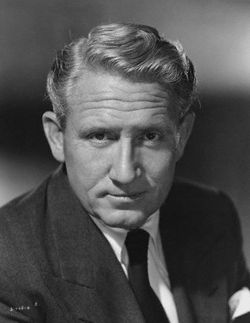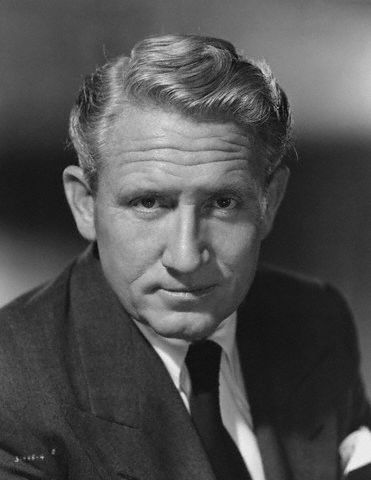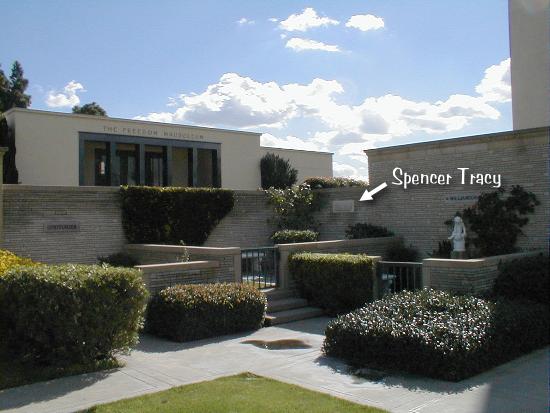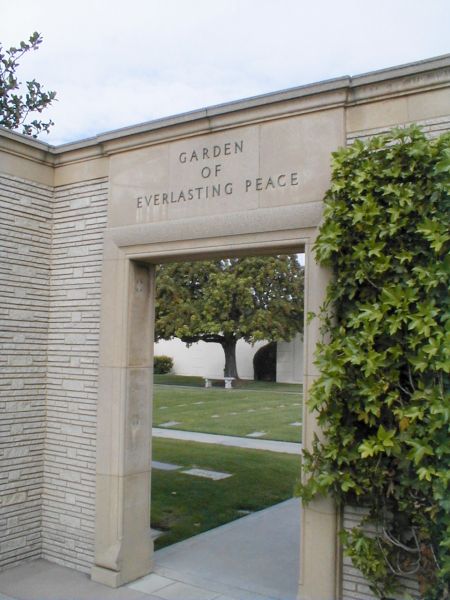Actor. An American actor in Hollywood's Golden Age, he was nominated for an Academy Award nine times in his career, receiving the coveted award in 1937 for his portrayal of a Portuguese fisherman in "Captains Courageous" and the following year, again for his role as Rev. Msgr. Edward Joseph Flanagan in "Boys Town." He was the first actor to receive back-to-back Best Actor awards. A boyhood marked by truancy and fighting, he left high school and enlisted in the Navy during World War I, but never saw action. Later, he finished high school and entered Ripon College in Wisconsin, where one of his professors steered him towards acting. In 1922, he transferred to the American Academy of Dramatic Arts in New York, and shared a furnished room with a boyhood friend, actor Pat O'Brien. Tracy landed roles in local theater productions before working his way onto the Broadway stage. In 1930, he appeared in his first film "The Strong Arm" and would appear in over 75 films in a career that spanned four decades. His career did not fully bloom until he signed with Metro-Goldwyn-Mayer in 1935. Besides receiving two Academy Awards, he was nominated for "San Francisco" in 1937, "Father of the Bride" in 1951, "Bad Day at Black Rock" in 1956, "The Old Man and the Sea" in 1959, "Inherit the Wind" in 1961, "Judgment at Nuremberg" in 1962, and a posthumous nomination for "Guess Who's Coming to Dinner" in 1968. Tracy co-starred in nine films with Katharine Hepburn in "Woman of the Year" in 1942, "Keeper of the Flame" in 1943, "Without Love" in 1945, "The Sea of Grass" in 1947, "State of the Union" in 1948, "Adam's Rib's" in 1949, "Pat and Mike" in 1952, "Desk Set" in 1957, and "Guess Who's Coming to Dinner" in 1968. Besides having an on-the-screen chemistry, he was in a 26-year personal relationship with Hepburn, from 1941 until his death in 1967, although he was married, but separated from his wife, Louise. He and his wife had a son, who was born deaf, and a daughter. Tracy was a devout Roman Catholic, thus divorce was out of the question. For his contributions to the film industry, Tracy was given a star on the Hollywood Walk of Fame; is listed at number nine on the American Film Institute's list of greatest actors of all time; has an award for excellence bestowed in his name by the University of California, Los Angeles; and was featured on the U.S. Postal Service's series of stamps of America's Greatest Actors. Through the years, he suffered from bouts of alcoholism. In 1965, he had a serious decline in his health for a number of reasons, but rallied and continued to act for two more years.
Actor. An American actor in Hollywood's Golden Age, he was nominated for an Academy Award nine times in his career, receiving the coveted award in 1937 for his portrayal of a Portuguese fisherman in "Captains Courageous" and the following year, again for his role as Rev. Msgr. Edward Joseph Flanagan in "Boys Town." He was the first actor to receive back-to-back Best Actor awards. A boyhood marked by truancy and fighting, he left high school and enlisted in the Navy during World War I, but never saw action. Later, he finished high school and entered Ripon College in Wisconsin, where one of his professors steered him towards acting. In 1922, he transferred to the American Academy of Dramatic Arts in New York, and shared a furnished room with a boyhood friend, actor Pat O'Brien. Tracy landed roles in local theater productions before working his way onto the Broadway stage. In 1930, he appeared in his first film "The Strong Arm" and would appear in over 75 films in a career that spanned four decades. His career did not fully bloom until he signed with Metro-Goldwyn-Mayer in 1935. Besides receiving two Academy Awards, he was nominated for "San Francisco" in 1937, "Father of the Bride" in 1951, "Bad Day at Black Rock" in 1956, "The Old Man and the Sea" in 1959, "Inherit the Wind" in 1961, "Judgment at Nuremberg" in 1962, and a posthumous nomination for "Guess Who's Coming to Dinner" in 1968. Tracy co-starred in nine films with Katharine Hepburn in "Woman of the Year" in 1942, "Keeper of the Flame" in 1943, "Without Love" in 1945, "The Sea of Grass" in 1947, "State of the Union" in 1948, "Adam's Rib's" in 1949, "Pat and Mike" in 1952, "Desk Set" in 1957, and "Guess Who's Coming to Dinner" in 1968. Besides having an on-the-screen chemistry, he was in a 26-year personal relationship with Hepburn, from 1941 until his death in 1967, although he was married, but separated from his wife, Louise. He and his wife had a son, who was born deaf, and a daughter. Tracy was a devout Roman Catholic, thus divorce was out of the question. For his contributions to the film industry, Tracy was given a star on the Hollywood Walk of Fame; is listed at number nine on the American Film Institute's list of greatest actors of all time; has an award for excellence bestowed in his name by the University of California, Los Angeles; and was featured on the U.S. Postal Service's series of stamps of America's Greatest Actors. Through the years, he suffered from bouts of alcoholism. In 1965, he had a serious decline in his health for a number of reasons, but rallied and continued to act for two more years.
Bio by: Louis du Mort
Family Members
Advertisement
See more Tracy memorials in:
Records on Ancestry
By Ancestry®
Advertisement













